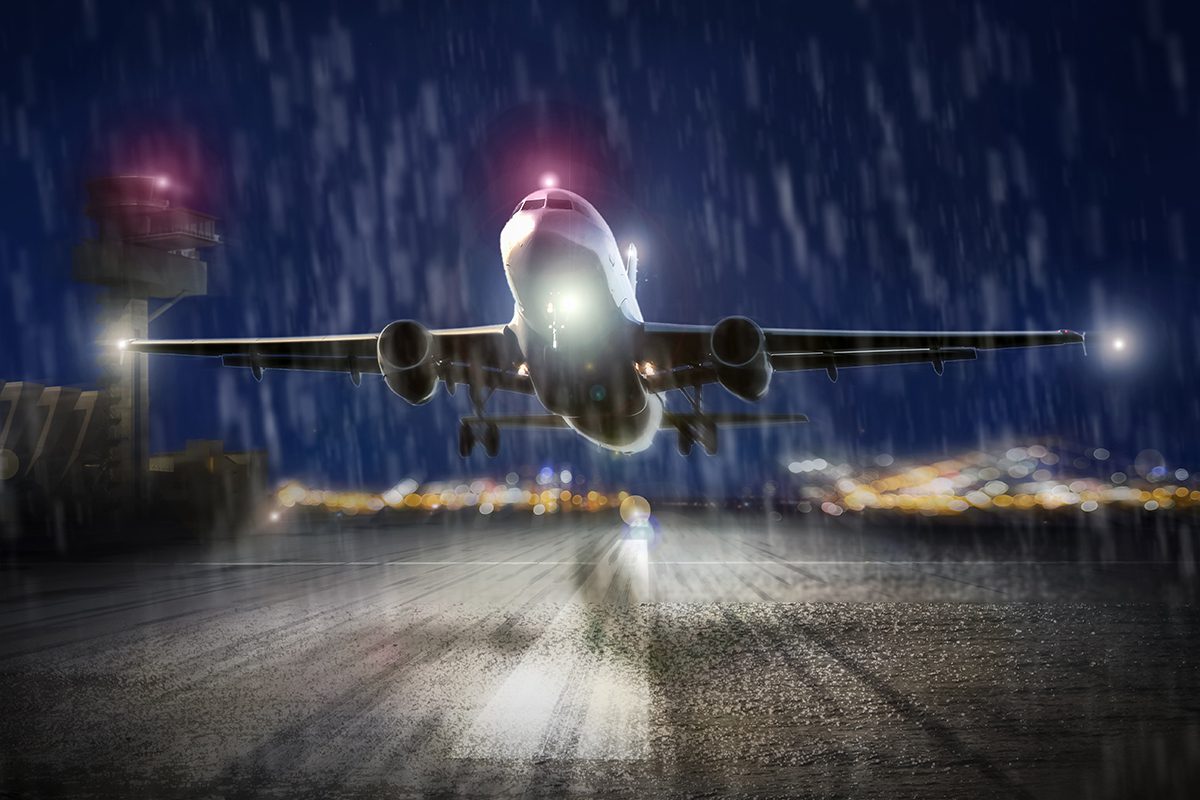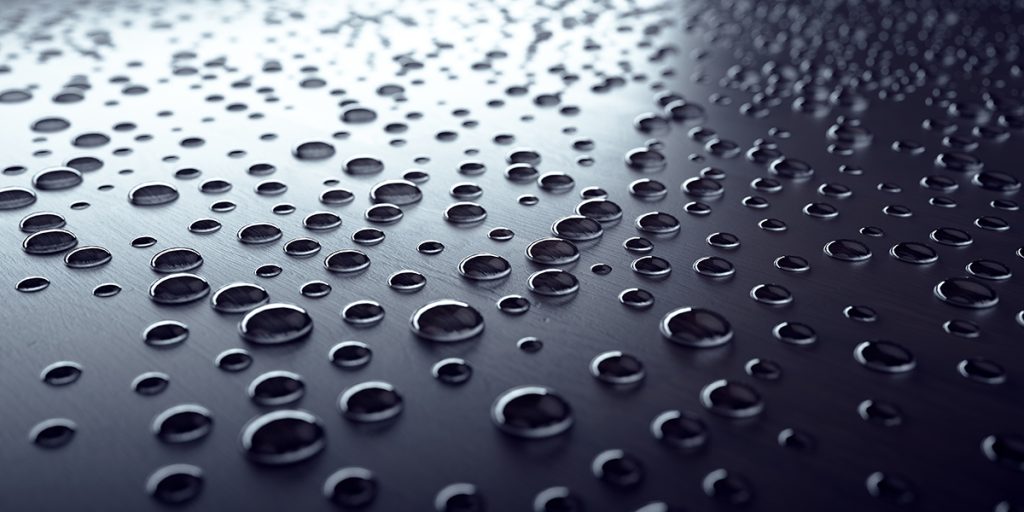Using Hydrophobic Coatings to Enhance Efficiency and Longevity in Aerospace Operations

Are you tired of dealing with the constant challenges brought on by water damage and corrosion in the aerospace industry? We understand the frustrations you face when traditional coatings fail to provide adequate protection against water damage, leading to decreased performance, increased maintenance costs, and potential safety risks. As a product designer, engineer, or OEM, you understand the critical importance of finding effective solutions to boost production efficiency, manage costs, and prevent expensive product redesigns. That’s why hydrophobic coatings might be the game-changer you’ve been searching for.
In this blog post, we will delve into the incredible benefits of industrial hydrophobic coatings specifically tailored for the aerospace industry. From the reduction of water contact on surfaces to the prevention of ice accumulation, hydrophobic coatings have the power to enhance the durability, efficiency, and overall performance of your aircraft components. With our expertise in powder coating finishes and dedication to providing top-notch services, we are confident that we can meet your unique needs.
Why Do Aerospace Manufacturers Need to Worry About Water Damage?
As an aerospace manufacturer, you understand the immense challenges that water damage can pose to your aircraft components. From the corrosion of metal surfaces to the degradation of electrical systems, water-related issues can lead to decreased performance, increased maintenance costs, and even potential safety risks. But with
Hydrophobic coatings are specifically designed to repel water and provide a protective barrier against moisture. By applying a thin layer of this specialized coating to your aircraft parts, you can effectively shield them from the harmful effects of water. Imagine a scenario where raindrops bounce right off your aircraft’s surface, preventing any water from seeping into critical components. With hydrophobic coatings, this becomes a reality.

But don’t confuse hydrophobic and hydrophilic coating materials. A permanent hydrophobic coating creates a high contact angle with water, causing the water droplets to bead up and roll off the surface instead of spreading and causing damage. This water dispersion not only helps to prevent corrosion but also reduces the risk of ice accumulation on critical areas of the aircraft, such as wings or control surfaces.
Hydrophilic coating materials, on the other hand, attract water and allow it to wet the surface, causing a very low contact angle. While hydrophilic coatings have their place in certain manufacturing processes, they can prove problematic for those in the aerospace industry. Instead, choose a hydrophobic coating. By minimizing water contact and ice formation, hydrophobic coatings contribute to improved aerodynamic performance and fuel efficiency, ensuring your aircraft operates at its best.
How Does an Industrial Hydrophobic Coating Reduce Maintenance?
One of the major advantages of industrial hydrophobic coatings is their ability to reduce maintenance requirements for aerospace manufacturers significantly. Traditional coatings often require frequent repairs and refinishing due to water damage, which can be time-consuming and costly. However, with the application of a durable hydrophobic coating, the need for regular maintenance is greatly diminished.
When a hydrophobic coating protects your aircraft components, they become inherently resistant to water and moisture. This protection means that you can spend less time and resources on maintenance tasks such as repainting a hydrophobic wall coating or repairing surfaces damaged by water. The hydrophobic nature of the coating prevents water from penetrating the surface, reducing the risk of corrosion and extending the lifespan of your aircraft parts.
Not only does an industrial hydrophobic coating provide long-term protection against water damage, but it also offers excellent durability. PCTM’s hydrophobic coatings are designed to withstand harsh environments, including extreme temperatures, chemicals, and UV exposure. This robustness ensures that your aerospace components remain in optimal condition for extended periods, minimizing the need for frequent repairs or replacements. By investing in an industrial hydrophobic paint for exterior walls and surfaces of your aircraft, you can save both time and money, allowing you to focus on what truly matters—delivering high-quality, reliable aircraft to your customers.
Can a Permanent Hydrophobic Coating Improve Airplane Efficiency?
When it comes to the aerospace industry, even small improvements in efficiency can make a significant difference. That’s why aerospace manufacturers are always on the lookout for innovative solutions to enhance their aircraft’s performance. That’s why so many manufacturers have turned to the application of permanent hydrophobic coatings.
A permanent hydrophobic coating can have a remarkable impact on airplane efficiency. By repelling water and preventing it from adhering to the surface of the aircraft, these coatings minimize drag and increase fuel efficiency. When water comes into contact with a hydrophobic-coated surface, it beads up and rolls off rather than spreading and creating a larger contact area. This reduction in contact area significantly decreases the aerodynamic resistance caused by water droplets, allowing the aircraft to glide through the air more smoothly.
Think of it this way: Imagine you’re driving your car in the rain. As the raindrops hit your windshield, they create a barrier that affects your visibility and makes your wipers work harder. Now, imagine if your windshield had a special coating that repelled water. Instead of the raindrops clinging to the surface, they would roll off, leaving your windshield clear and unobstructed. This same principle applies to aircraft surfaces treated with hydrophobic coatings, leading to improved aerodynamic efficiency and reduced fuel consumption.
By investing in a hydrophobic wall coating from PCTM, you can give your aircraft that extra edge in performance, ultimately saving on fuel costs and reducing environmental impact. Take the leap and discover how this cutting-edge powder coating can revolutionize your aerospace projects.
Are There Any Environmental Impacts when Using Water-Resistant Coatings?
In today’s world, sustainability and environmental responsibility are at the forefront of every industry, including aerospace. When considering the implementation of water-resistant coatings, it’s crucial to address any potential environmental impacts. Fortunately, we understand the importance of eco-friendly solutions and offer coatings that prioritize both performance and sustainability.
The water-resistant coatings provided by PCTM are carefully formulated to minimize any negative environmental effects. These coatings are designed with low volatile organic compound (VOC) content, ensuring that they meet stringent regulatory standards while still delivering exceptional performance. By using coatings with low VOC content, PCTM helps reduce harmful emissions and contributes to a cleaner, greener future for the aerospace industry.
Additionally, the durability and longevity of hydrophobic coatings play a role in reducing environmental impact. If you choose just a hydrophobic paint for the exterior walls of the airplane, you’d have to repaint them frequently. Instead, with powder coatings protecting aircraft parts, the need for frequent maintenance is reduced since these coatings are long-lasting. They are also less susceptible to water damage and corrosion, resulting in extended lifespans. As a result, there is less need for frequent part replacements, conserving resources and reducing waste.
PCTM is committed to providing environmentally responsible coating solutions without compromising on performance or quality. By choosing their water-resistant coatings, you can enhance the efficiency and longevity of your aircraft while minimizing your ecological footprint. Join the movement towards sustainable aerospace practices and make a positive impact on both your operations and the environment.
What Type of Coatings Are Considered Hydrophobic?

When it comes to protecting your aerospace components from water damage, hydrophobic coatings are a game-changer. One type of hydrophobic coating is the fluoropolymer coating, which includes popular options like Teflon®. Our PTFE coatings are known for their exceptional water-repellent properties and high resistance to chemicals, heat, and UV exposure. Fluoropolymer coatings can be applied as a liquid spray or as a powder coating, providing a versatile solution for various aerospace needs.
By choosing the right hydrophobic coating for your specific aerospace needs, you can protect your components from water damage, corrosion, and other environmental factors, ultimately prolonging their lifespan and improving overall efficiency.
What’s the Difference Between a Hydrophobic and a Superhydrophobic Coating?
You may have heard the terms hydrophobic and superhydrophobic when it comes to water-repellent coatings, but what sets them apart? Let’s dive into the difference so you can make an informed decision for your aerospace projects.
Hydrophobic coatings are designed to repel water and prevent it from adhering to the coated surface. These coatings create a high contact angle with water, causing water droplets to bead up and roll off the surface instead of spreading and causing damage. Hydrophobic coatings offer excellent protection against water damage, corrosion, and ice accumulation, ensuring your aircraft components remain in optimal condition.
On the other hand, superhydrophobic coatings take water repellency to the next level. These coatings not only repel water but also exhibit an ultra-high contact angle, typically exceeding 150 degrees. This extreme water-repellent property creates a self-cleaning effect, as water droplets effortlessly pick up dirt particles and contaminants and roll off the surface, leaving it clean and pristine. Superhydrophobic coatings are often used in aerospace applications where maintaining cleanliness and minimizing drag are crucial, such as on wings or turbine blades.
Both hydrophobic and superhydrophobic coatings offer significant benefits for the aerospace industry. The choice between them depends on your specific requirements and performance expectations. With PCTM’s expertise in powder coating finishes, you can trust that the hydrophobic coatings they offer will provide exceptional water resistance and durability for your aerospace components.
Get a Quote Today for Your Aerospace Components!
If you’re an aerospace manufacturer grappling with the damaging effects of water on your aircraft components, it’s time to take action. The frustration and worry caused by water-related issues can hinder your production efficiency, increase costs, and even lead to expensive product redesigns. But there’s a solution that can alleviate these concerns and propel your aerospace projects to new heights: hydrophobic coatings.
Throughout this blog post, we’ve explored the numerous benefits of hydrophobic coatings for the aerospace industry. We’ve learned how these coatings repel water, prevent corrosion, and improve aerodynamic efficiency. With PCTM’s range of hydrophobic coatings, specifically designed for the aerospace industry, you can protect your aircraft components from water damage, reduce maintenance needs, and enhance overall performance.
Don’t let water damage hold you back any longer. Take the first step towards a more efficient, cost-effective, and reliable aerospace operation by requesting a quote from Precision Coating Technology & Manufacturing today. Our team of experts is ready to guide you through the process, understand your specific needs, and provide tailored solutions that fit your requirements. Request a quote now and embark on a journey towards a water-resistant future.
Resources:
- https://www.aviationpros.com/gse/gse-mx-reman-refurb-overhaul/article/53077799/the-evolving-role-of-coatings-and-partners-in-protecting-ground-support-equipment-for-extreme-weather
- https://www.theengineer.co.uk/content/news/hydrophobic-coating-prevents-the-build-up-of-ice-on-aircraft/
- https://www.escatec.com/blog/what-is-hydrophobic-coating
- https://www.thierry-corp.com/plasma-knowledgebase/hydrophobic-coatings-vs.-hydrophilic-coatings

